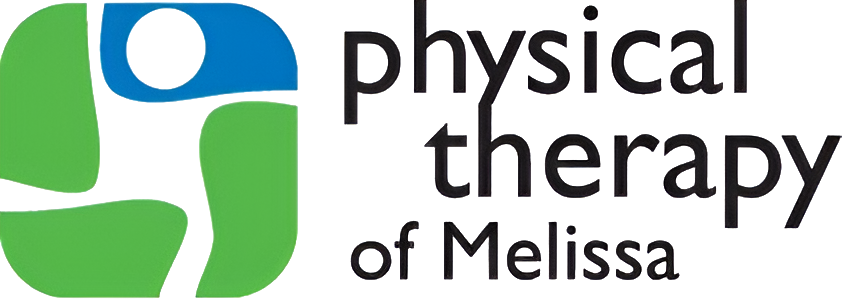
Opioids Don’t Need to Be the Answer for Arthritis Pain Relief
Find Relief for Your Joint Pain the Natural Way!
Arthritis is a general term that actually encompasses hundreds of different diseases. Whether you have osteoarthritis, rheumatoid arthritis, or any other type of arthritis, two of the primary symptoms are inflammation and joint pain. Whatever type of arthritis you suffer from, you’re likely struggling to overcome varying degrees of pain. If you are taking opioids for arthritis pain, we’re here to let you know that there is a better option.
Find relief with physical therapy
Physical therapy can be an effective alternative to taking opioids for arthritis pain.
There are several specific ways that a physical therapist can help an individual struggling with arthritis pain, including:
- Ergonomic modifications – A physical therapist will be able to make suggestions for your home environment that can help ease arthritic pain. These might include mats to stand on in your kitchen, ergonomic chairs, or certain types of mattresses or bedding you can use.
- Assistive devices – During physical therapy treatment you can also learn how to correctly use devices such as braces, canes, or walkers.
- Targeted exercises – A physical therapist can teach you exercises that will increase flexibility and strength. These exercises can also reduce the pain you experience when carrying out daily activities. According to the American Physical Therapy Association, research shows that individuals with arthritis can exercise without making pain worse.
- Electrical stimulation – TENS is Transcutaneous Electrical Nerve Stimulation therapy. This type of physical therapy includes pulses of electricity used to target arthritis pain. A physical therapist can place electrodes on the skin over the area of pain. Low amounts of electricity pass through to the joints. This can temporarily relieve arthritis pain.
- Manual therapy – A physical therapist can provide massage or use hot or cold therapy to ease arthritic pain. Massage can help improve circulation which can reduce joint pain.
If you’re struggling with arthritis pain, a trained physical therapist can work with you to increase your mobility while decreasing pain.
What should I know about opioids?
Opioids are powerful narcotics that work to cause numb relief. They have the ability to bind to the brain’s opioid receptors and to limit the messages of pain sent to the brain. Both oxycodone and morphine are considered to be opioids.
While opioid drugs may be beneficial when carefully used over a short period of time, they are not without serious drawbacks. They are highly addictive and they often interact with other drugs. Approximately 42,000 deaths related to opioid overdoses occurred in 2016.
If you are currently taking some type of opioid for your arthritis pain, it is important to know that there is a safer alternative that can reduce and even eliminate pain.
Is arthritis impacting your everyday life?
If you’re struggling with osteoarthritis, you’re likely to experience pain, stiffness, and limited flexibility. Rheumatoid arthritis may cause similar symptoms and may affect organs in the body.
Psoriatic arthritis and gout are also types of arthritis that can cause varying levels of pain, inflammation, and mobility. Arthritis pain may affect even the simplest of daily activities.
Washing, cooking, and walking up and down the stairs can prove difficult with any of these types of arthritis. The severity of the pain may also change on a daily basis. Because of this, it can become too easy to rely on powerful pain medications to cope with arthritis pain.
What else should I consider?
It is quite common for people who have arthritis pain to resort to expensive surgery, steroid injections, and prescription medications to cope with their pain.
Sometimes, patients with severe arthritis may benefit from these treatments. However, more often than not, physical therapy and natural treatments are the best route to take.
Arthritis does not discriminate either, and although it is often found in elderly patients, it can affect anyone at any age.
According to a study on JAMA, “[rheumatoid] arthritis (RA) occurs in about 5 per 1000 people and can lead to severe joint damage and disability.”
Arthritis is also one of the leading causes of disability in the United States. If left untreated by a professional, patients with arthritis may experience extremely painful symptoms over a long period of time.
If you want to learn more about how physical therapy can benefit you and reduce your arthritis pain, please call our office today.
Get started today
Even if you are already taking opioids, an individualized physical therapy program may help you reduce the amount of medication you are taking.
To find out how you can reduce arthritis pain, contact us or visit us in Melissa, TX to set up an appointment with a physical therapist!

Avoid these five running mistakes during 5k season
While annual statistics are bleak when it comes to the success rates of New Year’s resolutions, don’t conclude that goalsetting is a fruitless endeavor, says physical therapist. Simply resolve to set smarter goals.
“Setting small, attainable goals throughout the year, instead of a singular, overwhelming goal in January 1, can help you reach whatever it is you strive for,” said Lynn Bufka, PhD, a psychologist with the American Psychological Association (APA). “Remember, it is not the extent of the change that matters, but rather the act of recognizing that lifestyle change is important and working toward it, one step at a time.”
Plenty of Americans seem to recognize that lifestyle change is important, especially this time of year when around 45 percent make resolutions, mostly related to health. According Nielsen ratings, the No. 1 New Year’s resolution in the U.S. last year was to stay fit and healthy (37 percent), with losing weight coming in at a close second (32 percent).
About 64 percent of these resolutions make it past four weeks, however, with an overall success rate of about 8 percent, said the University of Scranton in the Journal of Clinical Psychology.
These stats seem to cast a dim light on the capacity of people to make tangible changes in their lives – but it shouldn’t. The lack of success often begins with the goal itself. An ideal goal, according to experts, should be SMART, an acronym that stands for five specific qualities: specific, measureable, attainable, realistic and trackable.
“When setting goals, think about process and outcome,” states the Mayo Clinic, which advocates setting SMART goals for health-related issues such as exercise, weight loss and healthy eating. “Process goals are most important because changing your habits (processes) is key to success.”
The Mayo Clinic offers the following guidance for setting your own SMART goals:
Specific: Don’t be ambiguous when setting goals. Include all the important W’s in your goal: who, what, where and why. Instead of saying “I’d like to lose weight,” be more specific: “I want to lose 15 pounds by May 1 so I can go hiking without experiencing knee pain.”
Measurable: Always set concrete marks that allow you to measure the progress of your goal. Include your long-term goal, of course, but also include a few benchmarks along the way (e.g., lose 4 lbs. in Jan., 3 lbs in Feb., etc.).
Attainable: Make sure you have the time, resources and ability to achieve your goal. If you’re strapped for cash, don’t make it your goal contingent on joining a gym. Or if running is painful, don’t make it a goal to jog every day.
Realistic: Aim high, but don’t leave the stratosphere of what’s truly possible. Setting unrealistic goals – aiming to run a marathon when you’ve never completed a 5K, for instance – could just set you up for disappointment.
Trackable: Choose goals that allow for tangible ways to track progress, be it through weight lost per week, calories eaten per day, miles run on the treadmill, etc. Like in a sport, keeping score keeps you focused and motivated.
And of course, before beginning any new exercise regimen or weight-loss program, consult your physician or a certified physical therapist.
“Lasting lifestyle and behavior changes don’t happen overnight,” said Katherine C. Nordal, PhD, executive director for the professional practices of the APA. “Willpower is a learned skill, not an inherent trait. We all have the capacity to develop skills to make changes last.”
SOURCES:
Mayo Clinic: Be SMART about weight loss
http://www.mayoclinic.org/healthy-lifestyle/weight-loss/in-depth/health-tip/art-20049218
APA: Americans Report Willpower and Stress as Key Obstacles to Meeting Health-Related Resolutions
http://www.apa.org/news/press/releases/2010/03/lifestyle-changes.aspx
APA: Making your New Year’s Resolutions stick
http://www.apa.org/helpcenter/resolution.aspx
Statistic Brain Research Institute: New Year’s Resolution Statistics
http://www.statisticbrain.com/new-years-resolution-statistics/
Medical News Today: Training Yourself To Have More Willpower
http://www.medicalnewstoday.com/releases/255433.php
